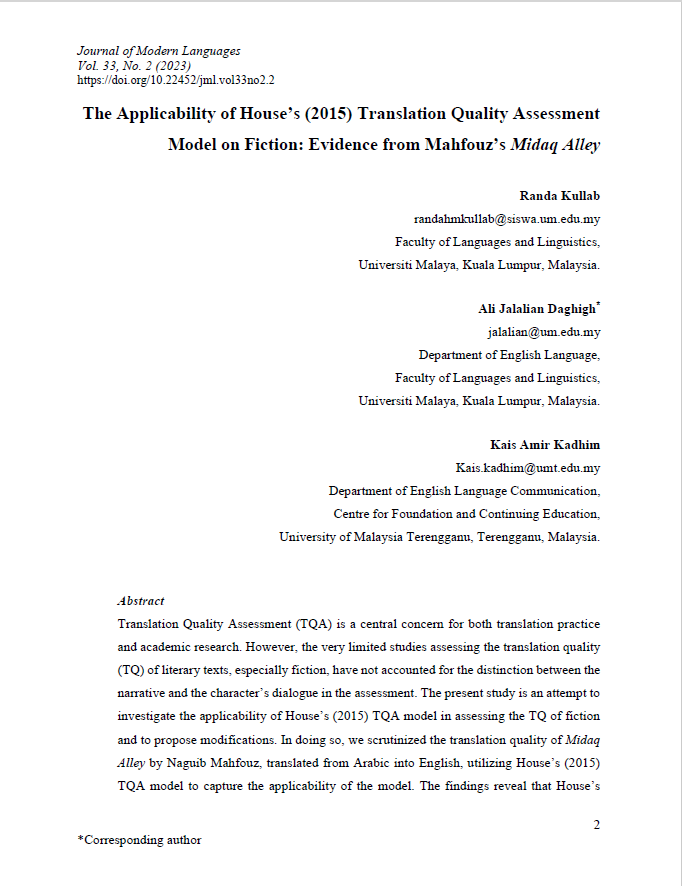The Applicability of House’s (2015) Translation Quality Assessment Model on Fiction: Evidence from Mahfouz’s Midaq Alley
Main Article Content
Abstract
Translation Quality Assessment (TQA) is a central concern for both translation practice and academic research. However, the very limited studies assessing the translation quality (TQ) of literary texts, especially fiction, have not accounted for the distinction between the narrative and the character’s dialogue in the assessment. The present study is an attempt to investigate the applicability of House’s (2015) TQA model in assessing the TQ of fiction and to propose modifications. In doing so, we scrutinized the translation quality of Midaq Alley by Naguib Mahfouz, translated from Arabic into English, utilizing House’s (2015) TQA model to capture the applicability of the model. The findings reveal that House’s (2015) TQA model accommodates the TQA of fiction. The proposed modifications have implications for both translators and trainers.

